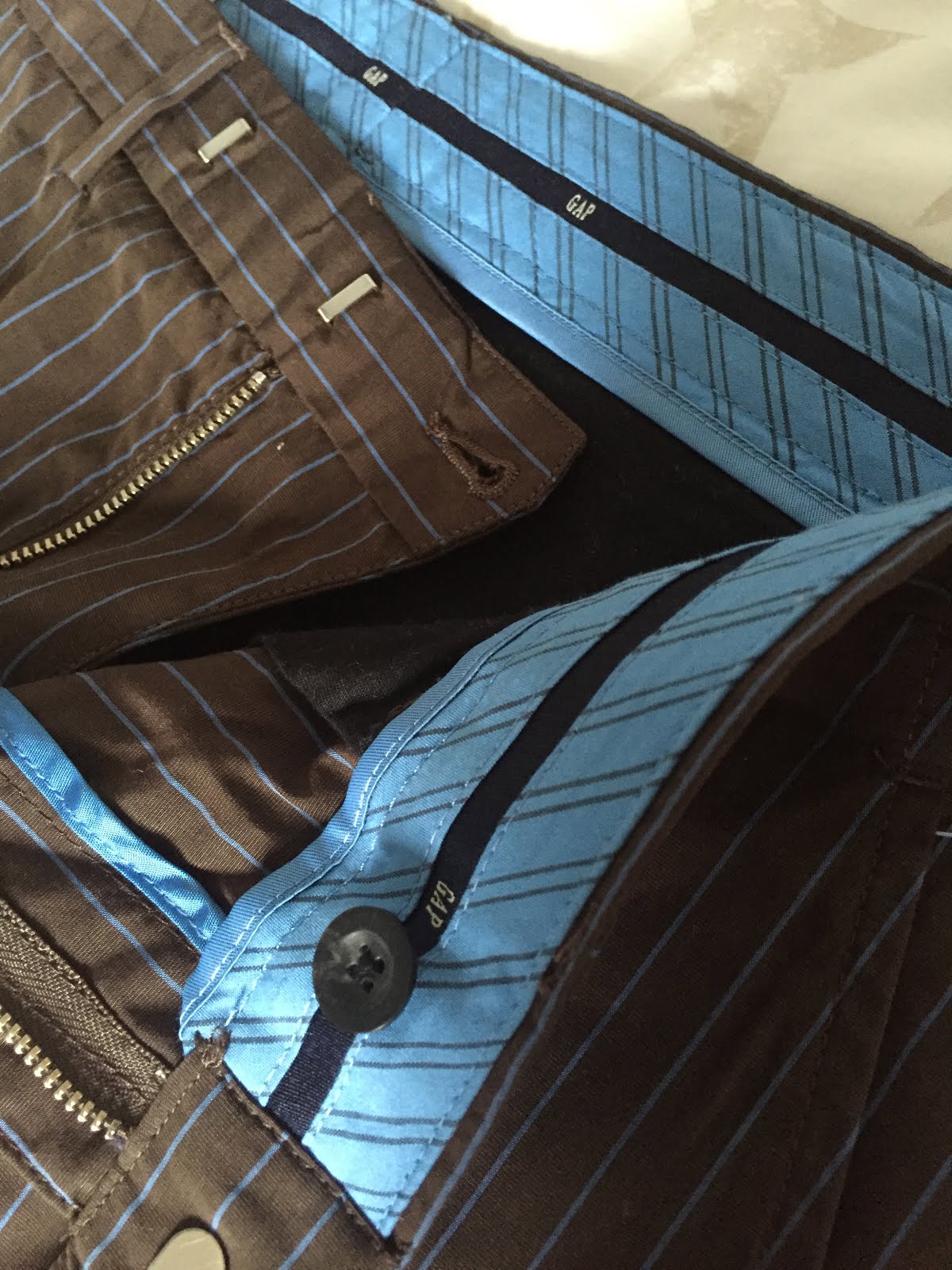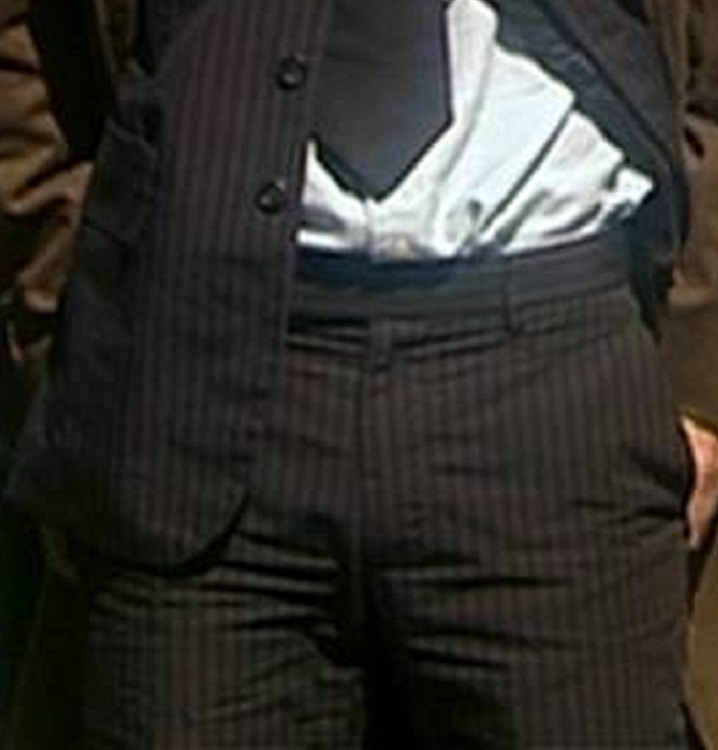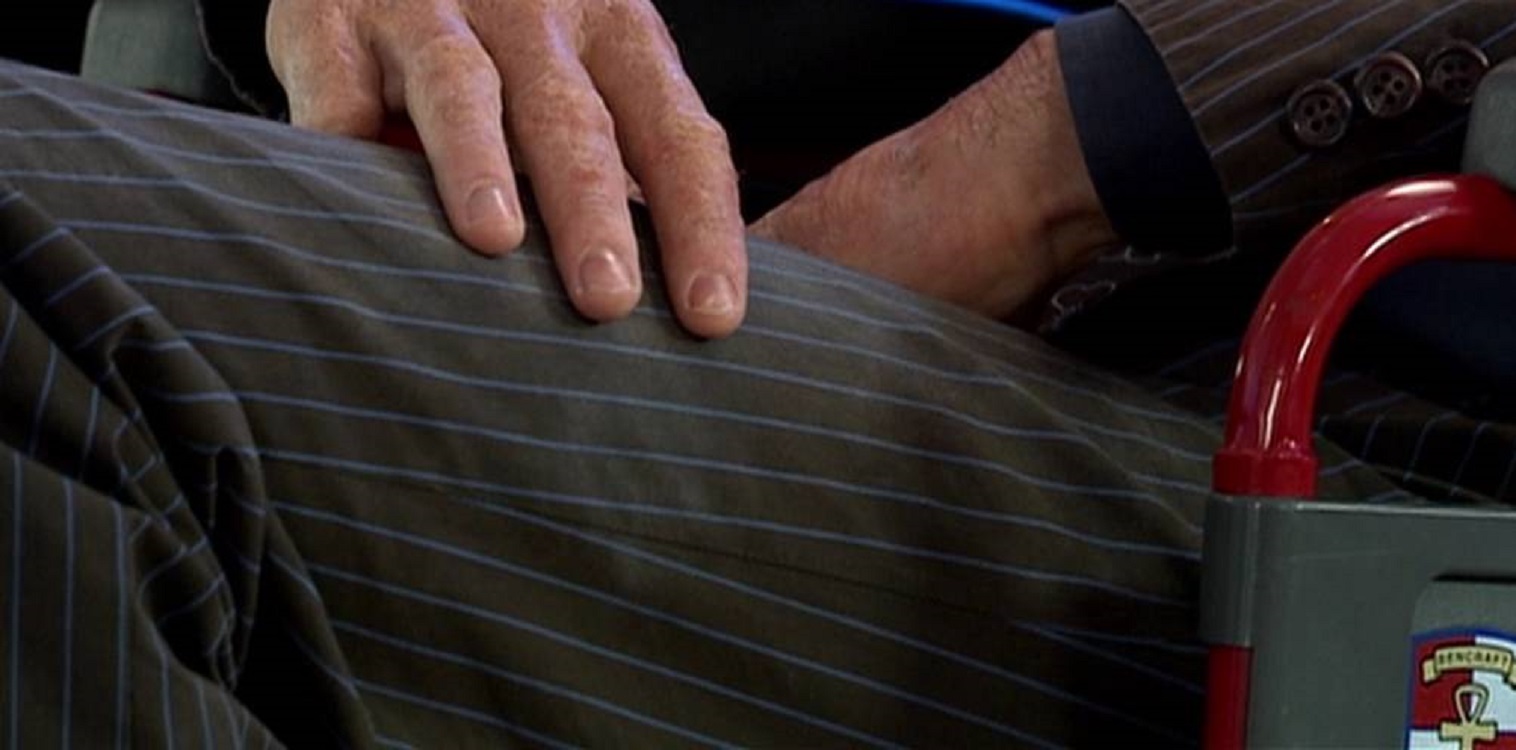As mentioned previously, the 10th Doctor’s brown suit trousers were “off the rack,” retail GAP trousers, not custom-made costume pieces for the show.
Those GAP trousers have, unfortunately, been discontinued and are only available for private purchase or trade (if you’re even able to find a pair at this point).
I’d like to extend special thanks to Thomas Dunn for photographing a pair of authentic GAP trousers in detail and allowing me to use these photos here in my analysis.
If you wish to reproduce every tiny detail of the GAP trousers with your replica suit, you should find these photos extremely helpful.
The 10th Doctor’s trousers were “low-rise,” consistent with modern fashion trends (as opposed to high-rise, Victorian-style “grandpa trousers” that many of his predecessors wore).
At the top of the trousers was a sewn-on waistband, which was cut separately on the crossgrain (i.e. the pinstripes were horizontal rather than vertical) and overlapped the right side by a couple inches or so.
The top of the waistband folded under, and the top of the waistband facing assembly appeared to be about ¼” from the top of the waistband.
The waistband facing was made from some (presumably bias-cut) lovely blue fabric with thin double stripes, with a thin (¼”?) cut of navy fabric or ribbon bearing the GAP logo more or less centered between the two cuts.
The lower portion of the waistband facing assembly was secured via a “stitch-in-the-ditch” along the trousers/waistband seam line.
The lower edge was bound with a similarly-colored seam binding, presumably rayon.
Note that all seam lines of the waistband facing were also edge-stitched.
The blue waistband facing fabric color varies considerably when photographed; sometimes it appears turquoise-y, while other times it looks more like a “sky blue” or “baby blue”:
Also note that the lower corner of the waistband facing was diagonally folded under at the facing/fly/waistband overlap intersection on the left side.
In the photos above, you can also see that the waistband overlap was edge-stitched on the outermost edge before being folded inward, but there was no edge-stitching on the remainder of the overlap.
There were two trousers-style hook-and-eye closures on the underside of the waistband overlap: one vertically even with the zipper, and one close to the outer (folded) edge of the overlap.
Seven self-fabric belt loops around the upper perimeter of the trousers provided the wearer with the option of wearing a belt (although, as best I could tell, Tennant never actually did): two at the side front, two at the sides, two at the side back, and one at the center back.
The lower ends of the belt loops were sewn into the waistband and stitched to the trousers again about ⅜” (possibly ½”) below the waistband.
The trousers closed in the center front via a zipper fly closure.
Both the left and right center back allowances were finished “Hong Kong” style with some blue fabric – a similar color to the seam binding along the lower edge of the waistband facing assembly, but actually a different material.
The right fly was a bit unusual in its construction; on the outside, the fly was sewn into the waistband seam, but on the inside, the right fly (facing) extended all the way up to the top of the waistband.
As you can also see in the photos above, the right fly and right fly facing were edge-stitched together along the upper and outer (centermost) edges.
The front pocket pouches were closed with French seams, and Thomas mentioned that the right pocket had a neat little coin pocket inside it.
On the back of the trousers was a double-welt pocket on each side.
A thin loop extended downward from under the top welt around button beneath the lower welt, to secure the pocket closed.
The back pockets’ welts were cut on the crossgrain (as is common practice) with the pinstripes vertically centered on the welt.
The loops were made of thin strips of self-fabric; the loops and their corresponding buttons were positioned directly beneath the back darts.
As with the front pockets, the back pockets were closed with French seams.
The trousers were “basic” four-panel construction – that is, two fronts and two backs:
The lower pant legs were blind-hemmed – no cuffs, topstitching, straps, vents, or other funny business.
Of course, the trousers should ideally be as flattering a fit as possible – but good luck topping this!

































